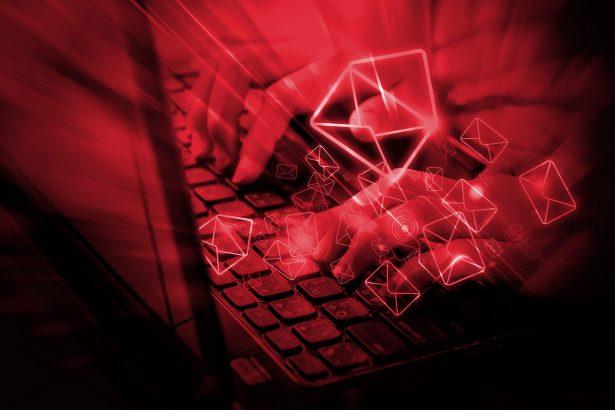Phishing scams are among the most prevalent cyber threats that individuals and businesses face today. These scams typically arrive in the form of deceptive emails, text messages, or websites designed to trick users into revealing sensitive information, such as passwords, credit card numbers, or social security numbers. By masquerading as legitimate communications from trusted entities, phishing scams exploit the trust of unsuspecting victims. Once a user is lured in, these scams can lead to identity theft, financial loss, and significant damage to personal and professional reputations.
Phishing emails can vary in their approach. Some may claim that you have won a prize, while others might threaten you with legal action if you don’t comply with their demands. The core of any phishing scam lies in its ability to manipulate the recipient into believing that the message is authentic. The more convincing the scam, the higher the likelihood that the victim will fall prey to it.
The Purpose of Phishing Scams and How They Infiltrate Systems
The primary goal of phishing scams is to obtain sensitive information or install malicious software (malware) on a victim’s system. Once the scammer has access to this information, they can use it for various malicious purposes, including unauthorized transactions, identity theft, or even corporate espionage.
Phishing scams typically infiltrate systems through email attachments, malicious links, or even direct downloads. An unsuspecting user might receive an email that appears to be from a reputable source, such as a bank or government agency. The email might ask the user to click on a link to verify their account details or download an attachment for more information. Once the link is clicked or the attachment is downloaded, the malware is installed on the victim’s system, giving the attacker unauthorized access.
The Threats Posed by Phishing Scams
Once a phishing scam successfully infiltrates a system, it can lead to a variety of issues:
- Identity Theft: The attacker can use stolen information to impersonate the victim, opening new credit accounts, making purchases, or even committing crimes under the victim’s name.
- Financial Loss: Scammers may gain access to bank accounts or credit cards, resulting in unauthorized transactions and significant financial loss.
- Data Breach: If the victim is a business, a successful phishing attack could lead to a data breach, exposing sensitive customer or corporate information.
- Ransomware: Some phishing scams are designed to install ransomware, which locks the victim’s files and demands a ransom for their release.
The “Irrevocable Payment Order” Email Scam
A recent phishing scam that has been making the rounds is the “Irrevocable Payment Order” email scam. This scam is particularly insidious because it preys on the urgency and authority associated with financial transactions.
The scam email typically arrives from an address such as info@jfmcs.org, which might seem legitimate at first glance. The email subject line usually contains urgent language, such as “Payment Approval Required” or “Irrevocable Payment Order Notice.” The email body then claims that an irrevocable payment order has been issued in the recipient’s name, and action is required to process or cancel the transaction.
The email may include specific instructions, such as contacting a particular email address or clicking on a link to verify the transaction details. It may also include a deadline, creating a sense of urgency that pressures the recipient to act quickly without considering the legitimacy of the request. The ultimate goal is to convince the recipient to either provide sensitive information or download a file that installs malware on their system.
Text presented in the “IRREVOCABLE PAYMENT ORDER” email letter:
Subject: RE Compensation
From:
ECONOMIC AND SOCIAL COUNCIL
INTERNATIONAL ENVIRONMENTAL PROTECTION MOVEMENT
1775 K ST NW # 400, NEW YORK 20006-1500,
UNITED STATES
IRREVOCABLE PAYMENT ORDER
Dear -.
This is to officially inform you that we have verified your contract /inheritance/Winning file and found out why you have not received your payment ,reason because you are still dealing with some None Officials/Ex-staff of the bank, which made your entire attempt to secure the release of your fund abortive.
We wish to advise that such illegal act have to be stopped by you, if you wish to receive your payment since we have decided to bring a solution to your problem.
During the course of our investigation, we discovered with dismay that payment of US$1,500,000.00 (ONE Million Five Hundred United States Dollars only) part payment has been unnecessarily delayed by corrupt officials of the Bank who are Trying to divert your funds into their private accounts.
We will monitor this payment ourselves to avoid the hopeless situation created by officials of the bank.
You are therefore advice to contact your claim agent for your MASTER ATM GOLD CARD below;
CONTACT PERSON: MR .MICHAEL MALAKASA
DIRECT PHONE: +443300010099
E-MAIL: malakasa.mic@yandex.com, jfdesignerevent@gmail.com
PAYOUT AMOUNT: US$1,500,000.00- (One Million, Five Hundred Thousand United States Dollars Only)
1. Your Full Names:
2. Address:
3. Telephone/ Fax Numbers:
4. Copy of Identification for payment:
5. Country of Origin:
Note: Due to imposters, we request you present this reference code to the ATM Card officer ATM/UNSCXX0X5X9X3X24 when contacting him
Please make sure that your reply goes through any of the ATM Director email as stated above. We are sorry for PAIN you must have gone through.
On behalf of UNITED NATIONS
Yours Sincerely
DR. RHAI SAI
UNITED NATIONS OFFICE
Why This Scam is Effective
The “Irrevocable Payment Order” scam is effective because it leverages fear and urgency. Most people are understandably anxious about unauthorized financial transactions, so they may act quickly to prevent what they believe is a pending loss. Additionally, the use of official-sounding language and email addresses adds to the illusion of legitimacy.
Victims may encounter this scam for several reasons, including:
- Random Targeting: The scammers send the email to a large list of recipients, hoping that at least a few will take the bait.
- Phishing Lists: The victim’s email address may have been obtained from a previous data breach or from a list purchased on the dark web.
- Impersonation: The scam email may be crafted to look like it is coming from a trusted financial institution or service the victim is familiar with.
Similar phishing scams that readers should be aware of include:
- Bank Account Verification Scams: Emails that claim there is a problem with your bank account and ask you to verify your details.
- Package Delivery Scams: Emails that claim there is a problem with a package delivery and ask you to click a link to resolve the issue.
- Tax Scams: Emails that claim you owe taxes or are entitled to a tax refund, prompting you to click a link or download a form.
Comprehensive Removal Guide
If you suspect that you have fallen victim to the “Irrevocable Payment Order” scam or any similar phishing scam, it is crucial to act quickly to minimize the damage. Follow these steps to remove any associated malware and secure your system:
Step 1: Disconnect from the Internet
- Immediately disconnect your computer from the internet to prevent further data transmission to the attacker.
- This can be done by unplugging the Ethernet cable, turning off Wi-Fi, or shutting down your router.
Step 2: Enter Safe Mode
- Restart your computer and press
F8(or the appropriate key for your system) during startup to enter Safe Mode. - Safe Mode loads only essential drivers and processes, which can help prevent the malware from running.
Step 3: Run an Anti-Malware Scan
- Download and install a reputable anti-malware tool like SpyHunter.
- Run a full system scan to detect and remove any malware that may have been installed by the phishing scam.
- Follow the tool’s instructions to quarantine and delete any malicious files.
Step 4: Update Your Passwords
- After removing the malware, update the passwords for any accounts that may have been compromised.
- This includes your email, banking, social media, and any other accounts you access frequently.
Step 5: Enable Two-Factor Authentication (2FA)
- Enable 2FA on all your accounts to add an extra layer of security. This ensures that even if your password is compromised, the attacker cannot access your account without the second factor.
Step 6: Monitor Your Accounts
- Regularly check your bank statements, credit reports, and online accounts for any unusual activity.
- If you notice any unauthorized transactions or changes, report them immediately to your bank or the relevant service provider.
Preventing Future Phishing Attacks
To protect yourself from future phishing attacks, follow these best practices:
- Be Skeptical of Unexpected Emails: If you receive an email from an unknown sender or a message that seems suspicious, do not click on any links or download any attachments. Verify the sender’s identity through other means before taking action.
- Use Anti-Phishing Filters: Many email services offer anti-phishing filters that can help detect and block phishing emails before they reach your inbox.
- Keep Your Software Updated: Ensure that your operating system, browser, and security software are always up to date with the latest security patches.
- Educate Yourself and Others: Familiarize yourself with common phishing tactics and share this knowledge with friends, family, and colleagues.
- Install and Regularly Use Anti-Malware Software: Tools like SpyHunter are invaluable in detecting and removing malware before it can cause significant damage. Download SpyHunter today and scan your computer for free.
By following these steps, you can protect yourself and your loved ones from the devastating effects of phishing scams.




